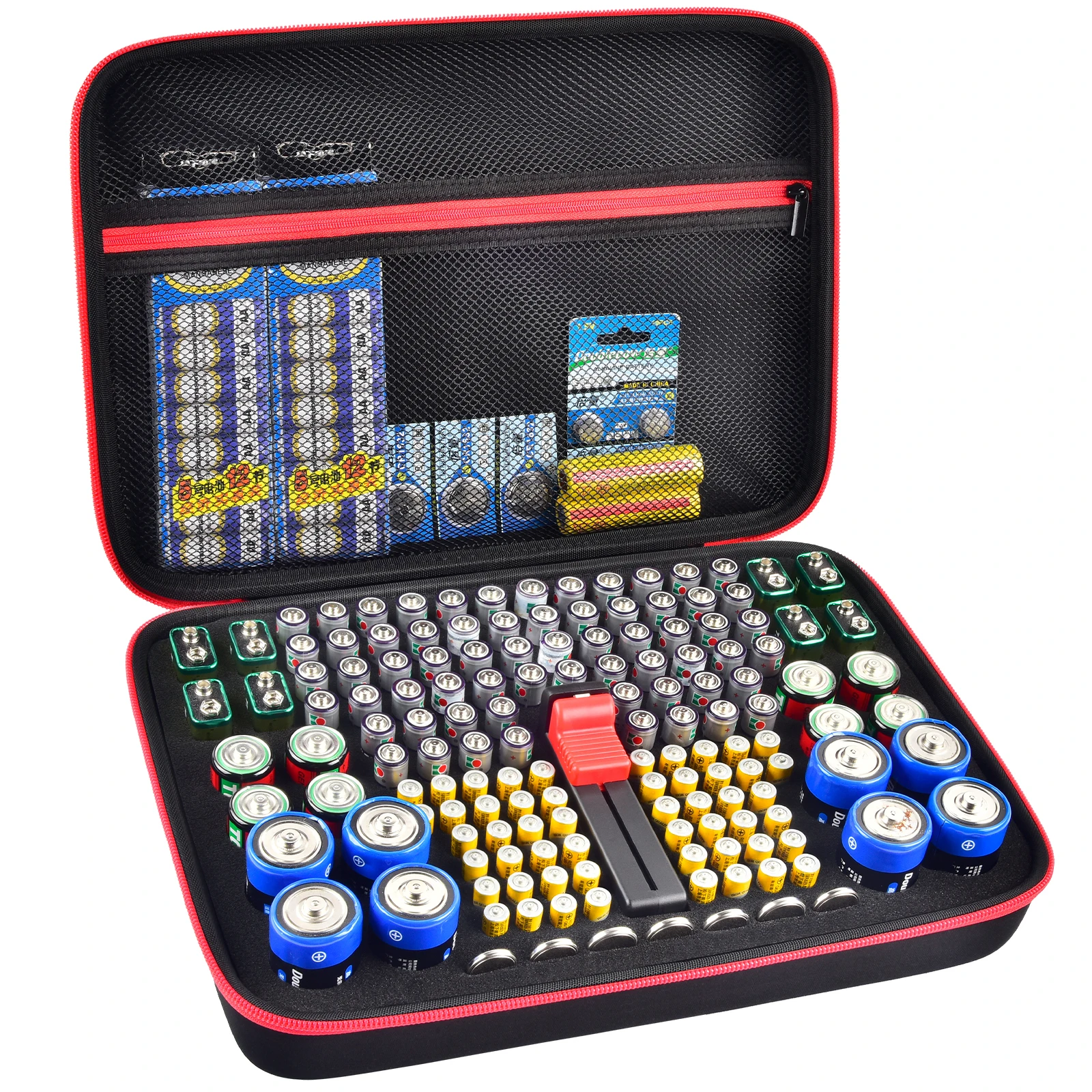Data Access (formerly Open Access ORM), the Telerik free .NET object-relational mapping tool
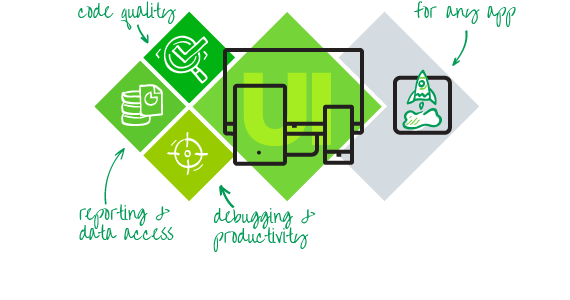
from http://www.telerik.com/data-access
is part of Telerik DevCraft—the ultimate product bundle for professional developers targeting Microsoft platforms.
Gain access to the complete stack of products to help you build your next web, mobile or desktop app:
- UI suites for all .NET platforms and HTML5 (ASP.NET AJAX, MVC, HTML5, Silverlight, WPF, WinForms and Windows 8)
- Reporting and data layer generation tools
- Developer productivity tools for better and cleaner code
-
Supported Databases
- Microsoft SQL Azure
- Microsoft SQL Server 2000, 2005, 2008, 2012
- Microsoft SQL Server 2005, 2008, 2012 Express, LocalDB
- Microsoft SQL Server Compact 3.5, 4.x
- Oracle Server 10.x, 11.x
- Oracle Database 10g, 11g Express Edition
- MySQL 5.x
- Maria DB 10.0 Alpha
- SQLite
- PostgreSQL 9.1
- Firebird 2.x
- Advantage Database Server 9.1, 10.1
- Sybase SQL Anywhere 11.x, 12.x
- VistaDB
-
LINQ Support
Data Access offers extensive LINQ support against all supported databases, which has been validated with the Microsoft 101 LINQ to SQL Samples (available in the Data Access Samples Kit). The major advantage of LINQ is the compile-time check of your queries-meaning no surprises at run time.
-
Utilizing Specific Database Features
Telerik Data Access can be used with a wide variety of relational backends. It offers specific features such as support for SQLGeometry and SQLGeography types in MS SQL Server, RefCursors and Auto-increment Sequences in Oracle. It also offers various types of Stored Procedures and Functions for each database, Data streaming to blob storage columns and more.
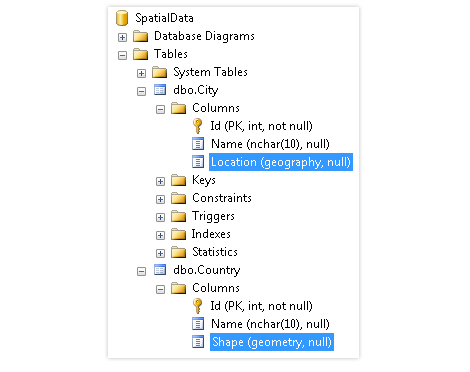
-
-
Utilizing Specific Database Features
Telerik Data Access can be used with a wide variety of relational backends. It offers specific features such as support for SQLGeometry and SQLGeography types in MS SQL Server, RefCursors and Auto-increment Sequences in Oracle. It also offers various types of Stored Procedures and Functions for each database, Data streaming to blob storage columns and more.
-
Database-first mapping is the process of creating a set of objects and .NET classes to be used in your application from an already existing database. This approach is also known as Schema-First and Reverse Mapping. Data Access recognizes the data model, the data types and any additional information like keys and stored procedures, and then generates the object model and related C# or VB.NET code. The process is transparent and you have complete control over the created mapping by using the Create Model Wizard.
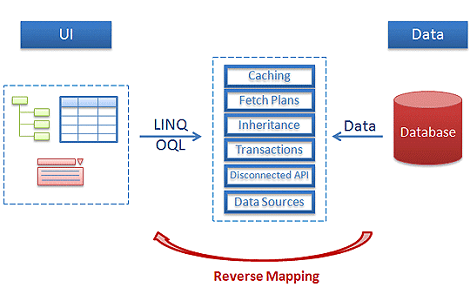
-
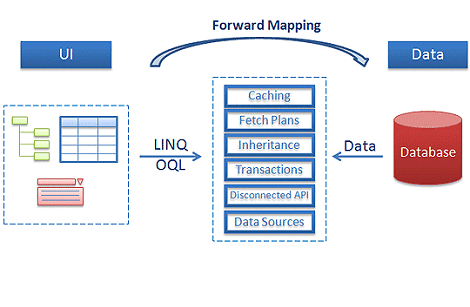
Model-First (Forward) Mapping
Model-First Mapping (also known as Forward mapping) takes your existing object model and creates an optimized database schema. In Telerik Data Access, this process is handled by the Update Database from Model wizard. It can generate your database and maintain its schema for you so that you will not have to do anything during the design phase.
-
Round-Trip (Mixed Mode) Mapping
The unique capability called Round-trip Mapping means you don’t have to choose in advance whether to forward- or reverse-map your project. With the help of Telerik Data Access Visual Designer in Visual Studio, you employ both approaches.
-

Code Only Mapping (Fluent API)
If you view code as your model, preferring to write code instead of using visual assistance tools, Telerik Data Access provides Fluent Mapping API that assists you in setting-up your classes for use with Data Access. There is no need to touch a designer or work with the XML mappings.The completely automated, initial Fluent Mapping code generation is done by Data Access. The Data Access Fluent API covers 100 percent of the the functionality of the mapper, and is efficiently used by Telerik Sitefinity CMS. If required, your model can be visually adjusted in the Visual Mapping Designer.
-
Mapping Stored Procedures and Functions
Data Access allows you to create new or reuse existing Stored Procedures and follow the widely adopted pattern of DB logic encapsulation inside the database. Under higher security requirements, the stored procedures can be used for all insert, read, update and delete operations to inject additional checks in the database server. A Stored Procedures Editor simplifies the set-up and use of stored procedures.

-
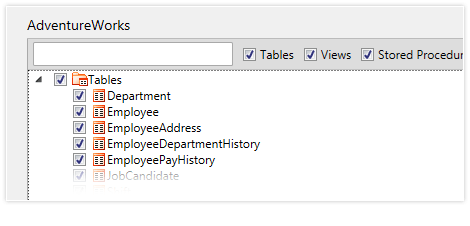
Mapping Tables and Views
Telerik Data Access forward and reverse mapping enables you to map database views and tables to classes. The data exposed by the tables and views can be modified and then stored back to the database.
-
Model Creation
The Data Access Model is created in Visual Studio with the aid of numerous tools and wizards, which simplify the process to point-and-click table to object mapping. The model describes the application-specific object or “conceptual” model against which you can program. It raises the abstraction level above logical database schemas, which also allows you to reuse it in different applications and for different databases.
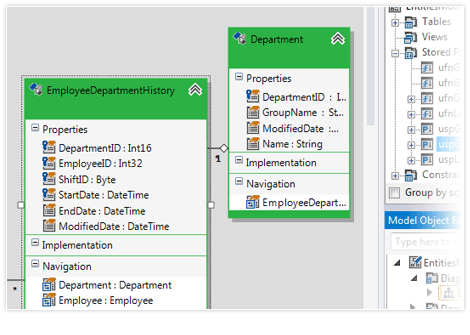
-
Native .NET API, ZERO Reflection, Application Portability
Data Access uses standard .NET conventions and idioms (inheritance, polymorphism, composition, .NET/generic collections, etc.). It does not use .NET reflection. The code is free of data access code “plumbing” and is enhanced transparently after compilation. The code generated by Data Access closely follows all established .NET and object-oriented programming standards.
All classes in Telerik Data Access are persistent ignorant and work independently from the source code and database. This means true portability for your .NET applications, where you can switch the database and reuse the same code and even data model.
-
Change Tracking and CRUD Operations
You only need to modify the state of an object when updating data – Data Access takes care of the rest. Because the programming model does not change, you do not need to know any of the SQL performed on the backend. Telerik Data Access converts the commands issued by the domain model at runtime (usually via LINQ or low-level API), into backend database retrieval and SQL statements. This frees you from writing the time-consuming CRUD operations. Data Access helps you with the following CRUD operations:
- Create– instantiate a .NET object and add it to the Data Access context
- Read– use LINQ to retrieve objects from the database
- Update– once you have a reference to a persistent object, you simply make changes to the object state
- Delete– pass the object to be deleted to the Data Access context

-
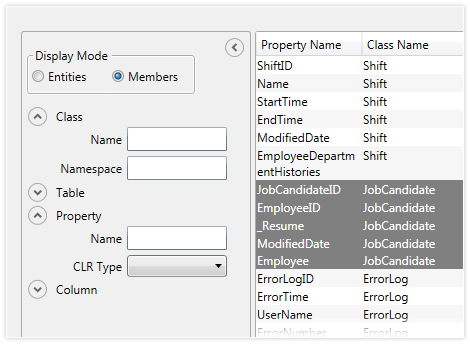
Model Operations Dialog for Instant Mapping Modification
Data Access provides the Model Operations that enable you to update your model in a few clicks. This is done through a simple dialog, so you can:
- Update many (or all) classes and properties using a configurable batch operation, such as changing class namespaces, changing property types and more
- Speed-up the process of making changes in class and property names by presenting them in a data grid
- Always have a good reference for the current state of your model using a grid-based overview
-
Testability
All classes enhanced by Telerik Data Access are still normal CLR objects, and as such, can be easily tested by state of the art unit tests. SQL code can be traced by writing it to the console, in a text file or to the .NET tracing framework. Performance counters show you the state of your running application, website or application server.
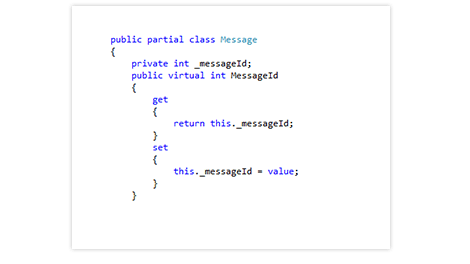
-


